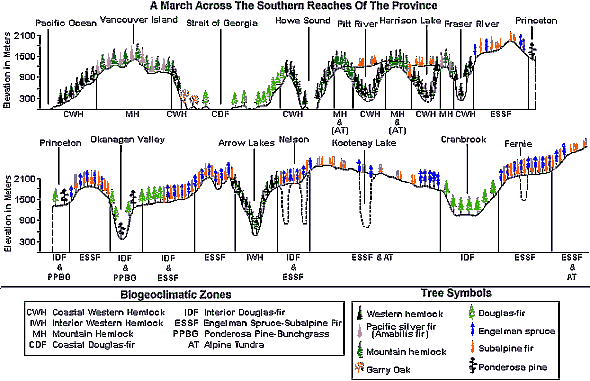
British Columbia has the widest range of plant life of Canada's provinces. Very broadly, the number and size of plant species decreases with distance from the mid to south coast region. This is due to an increase in elevation, an increase in latitude, and a decrease of the moderating affect of the relatively warm Pacific Ocean. Each of these factors makes it harder for plants to grow.
Not only does the province have a large number of plants, but the size of the province and its topography and climate make the pattern of vegetation incredibly complex. For example, the plants that appear as one moves up a mountainside at the coast are very different that those found at the same elevation in the Okanagan Valley or north west of Prince George.
One of the easiest ways to manage this complexity is by classifying areas with similar characteristics of animals, climate and soils in association with the dominant tree species. These are "biogeoclimatic" zones. At the most general level, the province can be broken into twelve zones.
A march across the southern reaches of the province will serve as an example of this classification and of the zones.
